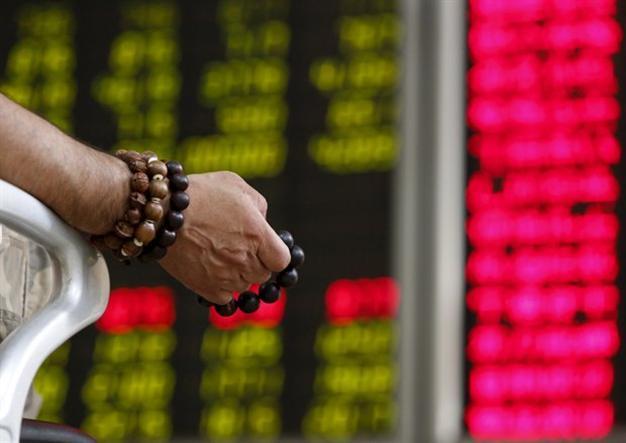China economic growth hits lowest since financial crisis
BEIJING - Agence France-Presse

An investor holds onto prayer beads as he watches a board showing stock prices at a brokerage office in Beijing, China, in this July 6, 2015 file photo. REUTERS photo
China's economy logged its worst performance since the global financial crisis on Oct. 19 with analysts warning it is likely to worsen and the government needs to do more to avert a sharp slowdown.
Gross domestic product (GDP) in the world's second-largest economy grew at just 6.9 percent in the third quarter, its slowest rate in six years, adding to fears over the health of the global economy.
"China's economic growth is still sluggish with many risks remaining unresolved," ANZ Banking Group chief economist for Greater China Liu Ligang told AFP.
"We should not be over-optimistic. China's economic growth will continue to slow down," he said, adding he estimated GDP would expand 6.4 percent next year.
China's decades-long boom, fuelled by infrastructure investment, exports and debt, made it a key driver of the global economy, the world's biggest trader in goods and a giant market in itself.
Even though growth has eased in recent years its GDP more than doubled in real terms between 2006 and 2014, according to World Bank figures.
Now it is looking to transition to a "new normal" of slower, more sustainable expansion driven by domestic consumer demand, but the change is proving bumpy and stock exchanges around the world have been pummelled in recent weeks by concerns over its future.
Monday's figure was the worst since the first quarter of 2009, although it was marginally above the median forecast in a poll of analysts by AFP.
It was also the first official confirmation of investors' fears over GDP since a Chinese stock market slump over the summer followed by a surprise currency devaluation in August.
Analysts now widely expect Beijing to further boost fiscal spending and ease monetary policy to prevent a sharper slowdown in growth.
China has already cut interest rates five times in a year and reduced the amount of cash banks need to hold in a bid to boost lending, but that stimulus has yet to be seen substantially driving real economic growth.
"We expect the government to continue to take additional incremental measures to ensure that growth does not deviate too much from its targets, but without going for major stimulus," Louis Kuijs, head of Asia economics at Oxford Economics, said in a research note.
China's GDP expanded 7.3 percent last year, the slowest pace since 1990, and at 7.0 percent in each of the first two quarters of this year.
The government has set a goal of "around seven percent" for 2015.
But many China watchers query the accuracy of numbers released by the government, with some suggesting they are manipulated for political reasons.
"Unfortunately, these figures need to be taken with a grain of salt as official GDP growth appears to have become a poor gauge of the performance of China's economy," Capital Economics China economist Julian Evans-Pritchard said in a research report.
A statement by the National Bureau of Statistics (NBS) described third-quarter growth as a "slight slowdown" but said the economy was still running within a "proper range".
"However, we must be aware that internal and external conditions are complicated, and downward pressure for economic development still exists," it said.
At a news conference, NBS spokesman Sheng Laiyun blamed a weak recovery in the world economy and expectations of a US interest rate hike for China's woes, as well as domestic overcapacity in industries ranging from steel to concrete.
China's growth slowdown has sent prices of commodities ranging from oil to copper to multi-year lows, and led the US Federal Reserve to delay a widely expected increase in borrowing costs.
Analysts attributed the July-September decline to the floundering property market and flagging exports, although retail sales offered some consolation.
A key indicator of consumer spending, they increased 10.9 percent in September, the government said, marginally ahead of the previous month.
Fixed asset investment, a measure of spending on infrastructure, expanded 10.3 percent on-year in the January-September period -- lower than a median projection for a 10.8 percent increase, according to a survey by Bloomberg News.
And industrial production -- which measures output at factories, workshops and mines -- rose just 5.7 percent year-on-year in September, the NBS said, well down on August's figure and missing economists' median estimate of 6.0 percent.
China's stock market took the figures in its stride, on expectations of more stimulus measures, analysts said. By the break on Monday, the benchmark Shanghai stock index was up 0.50 percent.
